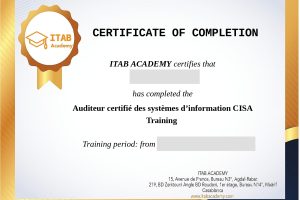Deciphering the Tech Certification Maze: A Guide to Choosing Your Path**
In today’s tech-driven world, certifications have become essential for validating expertise, advancing careers, and staying competitive in the job market. However, with the abundance of options available, selecting the right technology certification can be overwhelming. This guide aims to demystify the process and provide you with practical insights to navigate the diverse landscape of technology certifications effectively.
**1. Define Your Tech Goals and Objectives**
Start by clarifying your technology goals and aspirations. Ask yourself:
– What specific technology domains or fields am I passionate about? (e.g., cybersecurity, cloud computing, data science)
– Do I aim to deepen my existing knowledge or pivot to a new area of expertise?
– Are there specific skills or competencies I want to acquire to advance my career?
– How do I envision leveraging technology certifications to achieve my professional aspirations?
Understanding your objectives will help you narrow down your options and focus on certifications aligned with your goals.
**2. Research Certification Paths**
Explore the diverse array of technology certification paths available. Consider the following factors:
– Certification Providers: Identify reputable organizations, vendors, or industry bodies offering certifications in your areas of interest.
– Certification Levels: Determine whether certifications are available at various proficiency levels (e.g., beginner, intermediate, advanced) to match your current skills and experience.
– Specializations: Investigate specialized tracks or concentrations within broader technology domains to tailor your certification journey to your specific interests and career objectives.
– Curriculum and Content: Review the syllabus and course materials to ensure they cover relevant topics and align with your learning objectives.
– Delivery Formats: Choose between online courses, instructor-led training, self-paced study, or blended learning options based on your preferred learning style and schedule.
**3. Assess Industry Relevance and Demand**
Evaluate the relevance and demand for certifications in your chosen technology field. Consider the following:
– Industry Trends: Stay abreast of technological advancements, market demands, and industry trends to gauge the relevance and currency of different certifications.
– Employer Preferences: Research job postings and employer requirements to identify certifications that are valued and sought after by potential employers in your target industry or role.
– Emerging Technologies: Consider certifications in emerging or niche technologies that have high growth potential and offer promising career opportunities.
Prioritizing certifications with strong industry relevance and demand will enhance your marketability and employability.
**4. Consider Practical Application and Hands-On Experience**
Look for certifications that emphasize practical skills and real-world application. Consider the following:
– Practical Exercises: Seek certifications that incorporate hands-on labs, projects, or simulations to reinforce theoretical concepts and develop practical skills.
– Tool Proficiency: Choose certifications that cover relevant tools, platforms, or technologies prevalent in your field and provide opportunities for hands-on experience and proficiency.
– Case Studies: Look for certifications that include real-world case studies or scenarios, allowing you to apply your knowledge to solve practical problems and challenges.
Practical experience is invaluable for mastering technology concepts and preparing for the complexities of real-world work environments.
**5. Evaluate Career Benefits and ROI**
Assess the potential career benefits and return on investment (ROI) associated with obtaining certifications. Consider the following:
– Career Advancement: Determine how certifications will enhance your career prospects, credibility, and opportunities for progression within your field or industry.
– Salary Enhancement: Research the impact of certifications on salary levels and earning potential, particularly in high-demand or specialized technology areas.
– Job Opportunities: Identify how certifications can open doors to new job opportunities, roles, or industries, expanding your professional horizons and possibilities.
Choosing certifications with favorable career benefits and ROI ensures that your investment of time, effort, and resources yields meaningful returns in your career journey.
**Conclusion**
Selecting the right technology certification is a pivotal step towards achieving your career aspirations and advancing your expertise in the ever-evolving tech landscape. By defining your tech goals, researching certification paths, assessing industry relevance and demand, considering practical application and hands-on experience, and evaluating career benefits and ROI, you can navigate the certification maze with confidence and chart a course that propels you towards success. Remember that certifications are not just about acquiring credentials but also about acquiring valuable knowledge, skills, and experiences that empower you to thrive and innovate in the dynamic world of technology.




